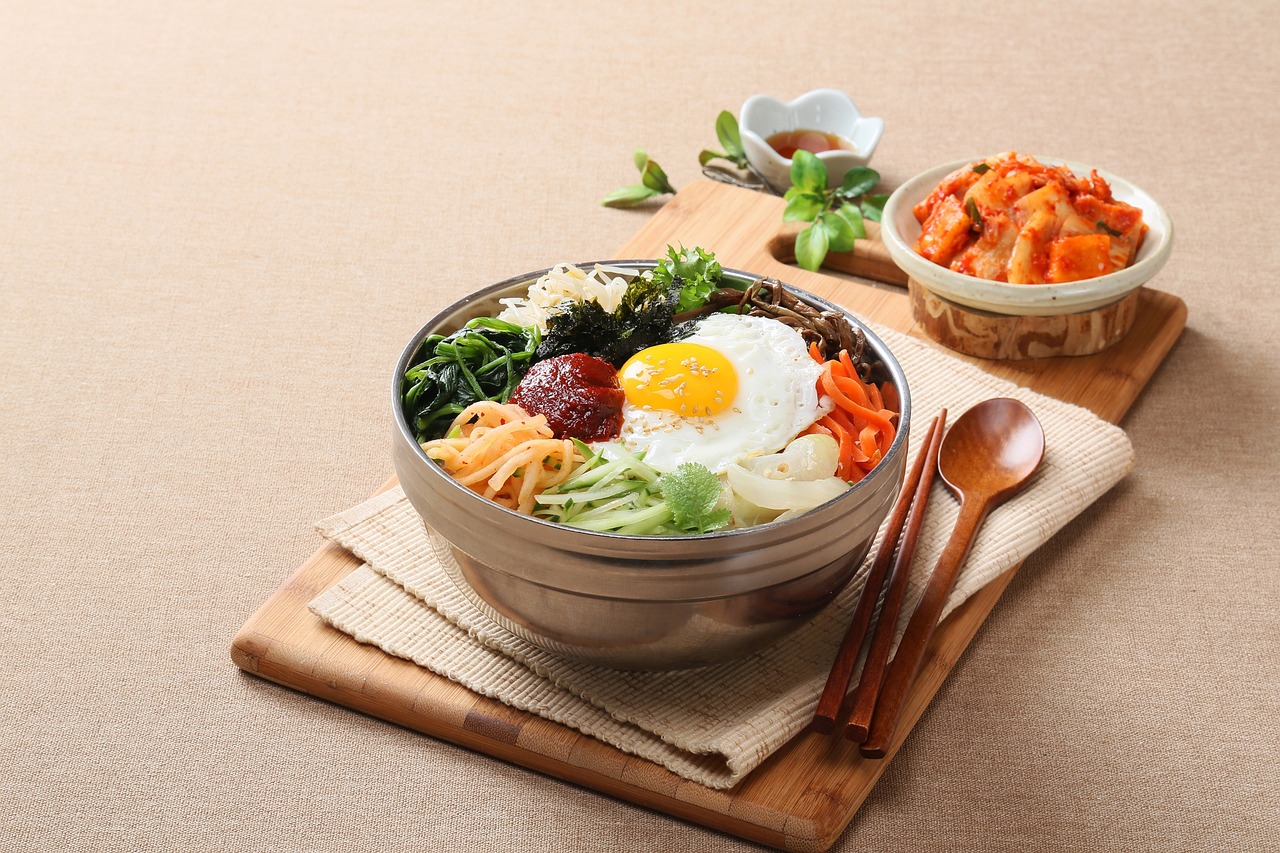Bibimbap, often called “mixed rice,” is one of my all-time favorite Korean dishes, and I love introducing it to my foreign friends. This exquisite dish is an embodiment of Korean cuisine, renowned for its flavors, colors, and balanced nutrition. In this blog post, I’ll take you on a journey to discover the origin, taste, and preparation of Bibimbap, as well as its health benefits and the city of Jeonju, famous for this delectable dish.
Exploring the Origins and Taste
Origin of Bibimbap: Bibimbap has a rich history, dating back to the Joseon Dynasty (1392-1910). It was a simple and practical way for Koreans to enjoy their rice mixed with a variety of vegetables and seasonings. Today, it’s a beloved culinary staple and an iconic Korean dish known worldwide.
Taste: The beauty of Bibimbap lies in its diversity. It combines a multitude of ingredients, creating a symphony of flavors, temperatures, and textures. The crispy and fresh vegetables, savory meat (often beef), a fried or poached egg, and the quintessential gochujang sauce come together to create a harmonious blend that is both comforting and invigorating.
Jeonju: The Bibimbap Capital
Jeonju, a city in South Korea, holds a special place in the heart of Bibimbap enthusiasts. It’s often regarded as the birthplace of this beloved dish and is renowned for serving the best Bibimbap in the country. If you haven’t been to Jeonju, your culinary journey to Korea is incomplete! I’ve been told that I must visit Jeonju and savor their Bibimbap, and I’m eagerly looking forward to writing a post about it soon.
The Efficacy of Bibimbap: A Nutritional Powerhouse
Bibimbap isn’t just a treat for your taste buds; it’s a wholesome and nutritious meal. Packed with a variety of vegetables, lean proteins, and rice, it offers an array of health benefits. The balance of ingredients in Bibimbap ensures you get essential nutrients, fiber, and energy in every bite. It’s a perfect representation of Korean cuisine’s emphasis on health and well-being.
Homemade Bibimbap: A Step-by-Step Guide
Bibimbap, a delightful Korean dish known for its vibrant colors and flavors, is surprisingly simple to make at home. In this step-by-step guide, we’ll delve into the process and provide some expert tips to perfect your Bibimbap. Let’s get started!
Ingredients:
- 2 cups of cooked rice
- 1 cup of spinach
- 1 cup of bean sprouts
- 1 carrot, julienned
- 1 zucchini, julienned
- 1 cup of mushrooms (shiitake or any of your choice), sliced
- 200g of beef (ribeye or sirloin), thinly sliced
- 4 eggs
- 4 tablespoons of sesame oil
- 4 tablespoons of gochujang (Korean red pepper paste)
- 2 tablespoons of soy sauce
- 2 teaspoons of sugar
- 2 tablespoons of sesame seeds
- Salt, for seasoning
Instructions:
1. Prepare the Rice:
Cook the rice according to package instructions. Once done, set it aside.
2. Blanch the Vegetables:
Spinach: Bring a pot of water to a boil. Add a pinch of salt and blanch the spinach for about 30 seconds. Drain and rinse it with cold water. Squeeze out excess water, then drizzle 1 tablespoon of sesame oil and a pinch of salt over the blanched spinach. Gently mix and set it aside.
Bean Sprouts: In a separate pot of boiling water with a pinch of salt, blanch the bean sprouts for 1-2 minutes. Drain and rinse with cold water. Toss them with 1 tablespoon of sesame oil and a pinch of salt.
3. Sauté the Vegetables:
Carrots: Heat a pan over medium-high heat, add 1 tablespoon of sesame oil, and stir-fry the julienned carrots for about 3-4 minutes until they’re tender-crisp. Season with a pinch of salt.
Zucchini: Using the same pan, stir-fry the julienned zucchini in 1 tablespoon of sesame oil for about 2-3 minutes until they’re slightly tender. Season with a pinch of salt.
Mushrooms: In a separate pan, add 1 tablespoon of sesame oil and stir-fry the sliced mushrooms until they’re browned and tender. Season with a pinch of salt.
4. Cook the Beef:
In the same pan used for mushrooms, stir-fry the thinly sliced beef. Add 2 tablespoons of soy sauce and 2 teaspoons of sugar to the beef. Cook until the beef is no longer pink, then set it aside.
5. Fry the Eggs:
In a separate pan, fry the eggs sunny-side up. The yolk should remain runny.
6. Assemble Your Bibimbap:
Now, it’s time to put it all together:
- Place a serving of rice in a bowl.
- Arrange the blanched and stir-fried vegetables, cooked beef, and fried egg on top.
- Drizzle 1 tablespoon of gochujang over the ingredients.
- Garnish with sesame seeds and an extra drizzle of sesame oil.
7. Mix It Right:
The name “Bibimbap” means “mixed rice,” so don’t forget to mix all the ingredients thoroughly before eating. This step blends all the flavors and textures together.
Q&A
Q1: Can I make a vegan Bibimbap? A1: Absolutely! Omit the beef and eggs, and you have a delicious vegan Bibimbap. You can also use tofu as a protein substitute.
Q2: What other ingredients can I add to Bibimbap? A2: It is incredibly versatile. You can include ingredients like cucumber, radish, or even kimchi to suit your taste.
Q3: Can I store leftover Bibimbap? A3: Yes, you can store leftovers in an airtight container in the refrigerator for up to 2-3 days. Reheat and mix before eating.
Now that you’ve mastered the art of making Bibimbap, you can savor this Korean culinary masterpiece whenever the craving strikes. Feel free to get creative with your choice of vegetables and proteins. Enjoy your homemade Bibimbap!


1 thought on “The Delight of Bibimbap: Korea’s Flavorful Culinary Gem”